As an Amazon Associate, I may earn commissions from qualifying purchases from Amazon.com, Amazon.ca or Amazon.co.uk. This post contains at least one Amazon affiliate link. You can read my Affiliate Disclosure here.
Elvis was perhaps the original Rock star. His first album, called simply, Elvis Presley was an era-defining slab of the most perfect Rock ‘n Roll. It doesn’t just have novelty value, it stands on its own merits. It sits at the head of the Elvis Presley discography, so here is where we are going to begin.
*note that the LP track listings are those on the original American releases
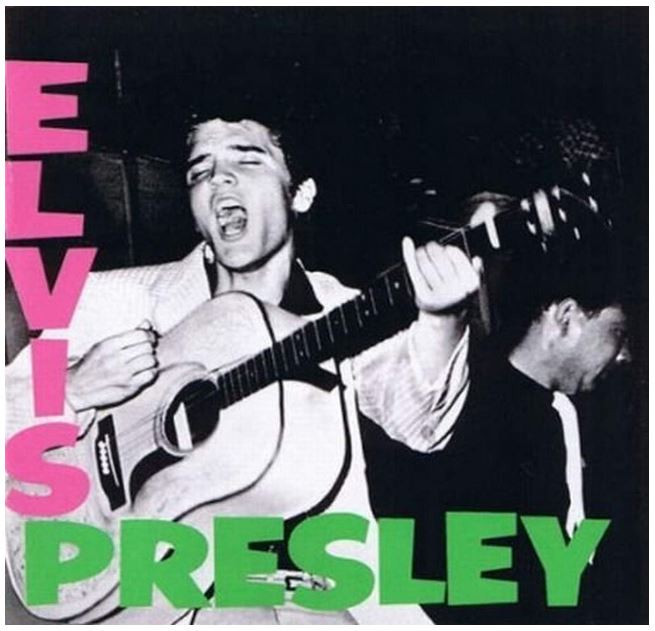
Elvis Presley (March 23, 1956, RCA Victor, LPM-1254)
This is it. If you were going to buy just one Elvis Presley album, this is the album. Elvis’s eponymous debut album. Featuring Presley’s epic rendition of Carl Perkins’ Blue Suede Shoes plus Little Richard’s Tutti Frutti.
It also showcases Elvis’s Country roots with Leon Payne’s Country Standard, I Love You Because which was also covered by Johnny Cash, Al Martino and Jim Reeves.
|
Side 1 |
Side 2 |
|
Blue Suede Shoes I’m Counting on You I Got a Woman One Sided Love Affair I Love You Because Just Because |
Tutti Frutti Tryin’ to Get to You I’m Gonna Sit Right Down and Cry I’ll Never Let You Go Blue Moon Money Honey |
Elvis (October 15, 1956, RCA Victor, LPM-1382)
Imaginatively titled Elvis, and released hot on the heels of Elvis Presley, Elvis
(the album) contained another twelve tracks that would further propel Elvis (the Rock star) to superstardom.
|
Side 1 |
Side 2 |
|
Rip it Up Love Me When My Blue Moon Turns to Gold Again Long Tall Sally First in Line Paralyzed |
So Glad, You’re Mine Old Shep Ready Teddy Anyplace is Paradise How’s the World Treating You How Do You Think I Feel |
Loving You (June 20, 1957, RCA Victor, LPM-1515)
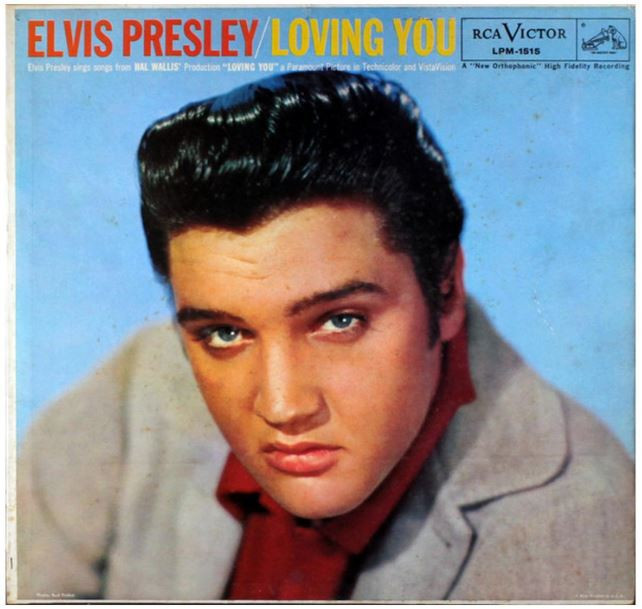
A pattern was established very early on with Elvis’s third album. A release early in the year, followed by a later one, presumably to take advantage of the Christmas selling season.
Loving You was also the first film to feature songs from a film’s soundtrack. In this case, Loving You was the first film in which Elvis took star billing.
His first film was 1956’s Love Me Tender, in his acting debut when he was third on the bill to Richard Egan and Debra Paget.
|
Side 1 |
Side 2 |
| Mean Woman Blues (Let Me Be Your) Teddy Bear Loving You Got A Lot O’ Livin’ to Do Lonesome Cowboy Hot Dog Party (Songs from the film, Loving You) | Blueberry Hill True Love Don’t Leave Me Now Have I Told You Lately That I Love You I Need You So (These songs are not from the film, Loving You) |
Christmas Album (October 15, 1957, RCA Victor, LOC-1035)
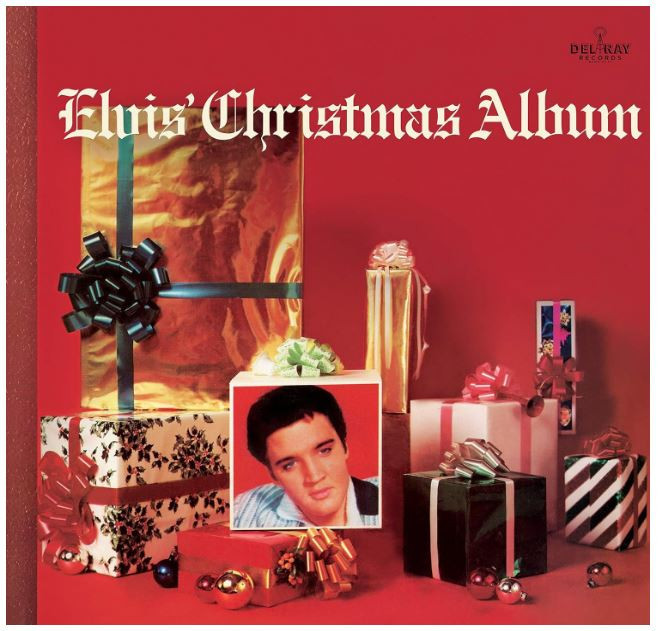
This was Elvis’s third studio album and the first of two Christmas LPs. It was a mixture of secular and traditional/Gospel Christmas tracks. The album has sold around twenty million copies worldwide and was the first of Elvis’s albums certified Gold by the RIAA.
The cover of the Bing Crosby classic White Christmas drew the ire of writer Irving Berlin, who demanded (of radio stations) that it and the entire album be banned from play. Most US radio stations ignored the request, but in Canada, the song (and other songs from the album) were not broadcast.
|
Side 1 |
Side 2 |
|
Santa Claus Is Back in Town White Christmas Here Comes Santa Claus (Right Down Santa Claus Lane) I’ll Be Home for Christmas Blue Christmas Santa Bring My Baby Back (To Me) |
Oh, Little Town of Bethlehem Silent Night (There’ll Be) Peace in The Valley (For Me) I Believe Take My Hand, Precious Lord It Is No Secret (What God Can Do) |
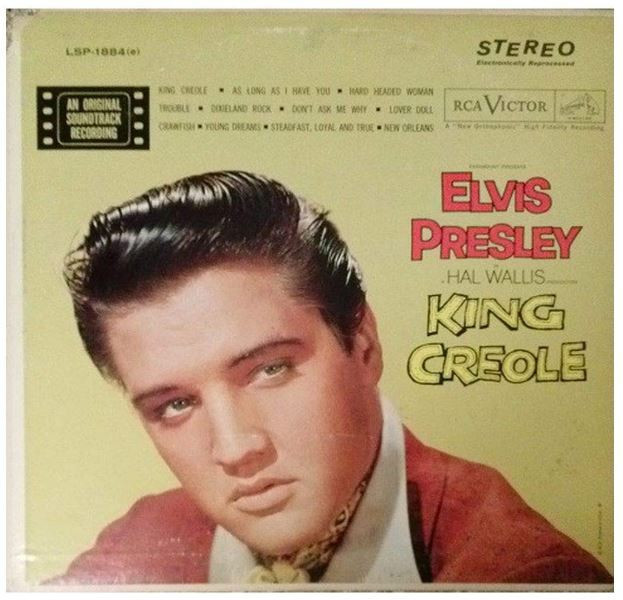
King Creole (September 19, 1958, RCA Victor, LPM-1884)
King Creole is the soundtrack album which accompanied Elvis’s third starring role in the film of the same name. The entire album was recorded in just four days at Radio Recorders in Hollywood.
Most of the tracks were penned by writers who were contracted to Hill and Range, the publishing house owned directly by Presley and Colonel Tom Parker amongst others. Three tracks, the title track and Trouble plus Steadfast, Loyal and True were written by Lieber and Stoller.
|
Side 1 |
Side 2 |
|
King Creole As Long as I Have You Hardheaded Woman Trouble Dixieland Rock |
Don’t Ask Me Why Lover Doll Crawfish Young Dreams Steadfast, Loyal and True New Orleans |
Elvis is Back! (April 8, 1960, RCA Victor, LPM/LSP-2231)
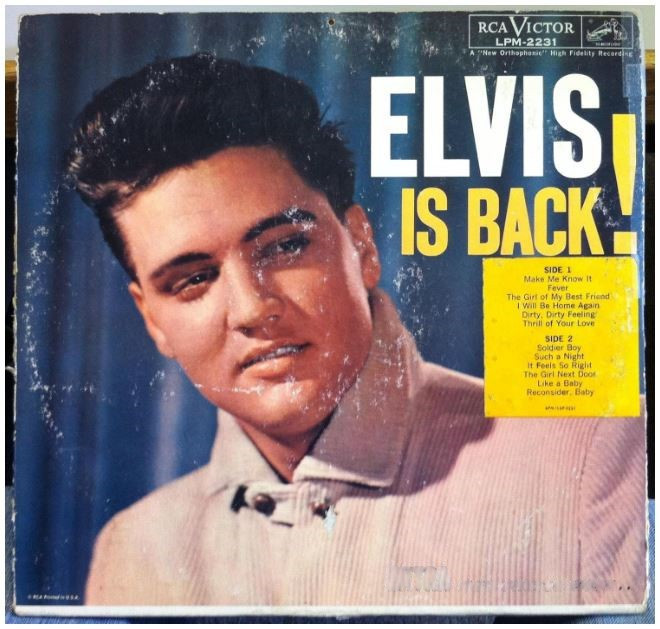
Elvis is Back! is Elvis’s fourth studio album and his first to be recorded in stereo. It was also a return to recording for him after his discharge from the US Army.
Originally drafted in January 1957, he had been granted a deferment to allow him to complete filming King Creole. Accordingly, he was not inducted until March 1958.
Elvis had expressed concern that his career would be ended by his time in the army. However, his RCA Victor producer and publisher had hedged against this eventuality and had stockpiled two years’ worth of material to release during his time in the army.
|
Side 1 |
Side 2 |
|
Make Me Know It Fever The Girl of My Best Friend I Will Be Home Again Dirty, Dirty Feeling Thrill Of Your Love |
Soldier Boy Such A Night It Feels So Right Girl Next Door Went A’ Walking Like A Baby Reconsider Baby |
G.I. Blues (September 23, 1960, RCA Victor, LPM/LSP-2256)
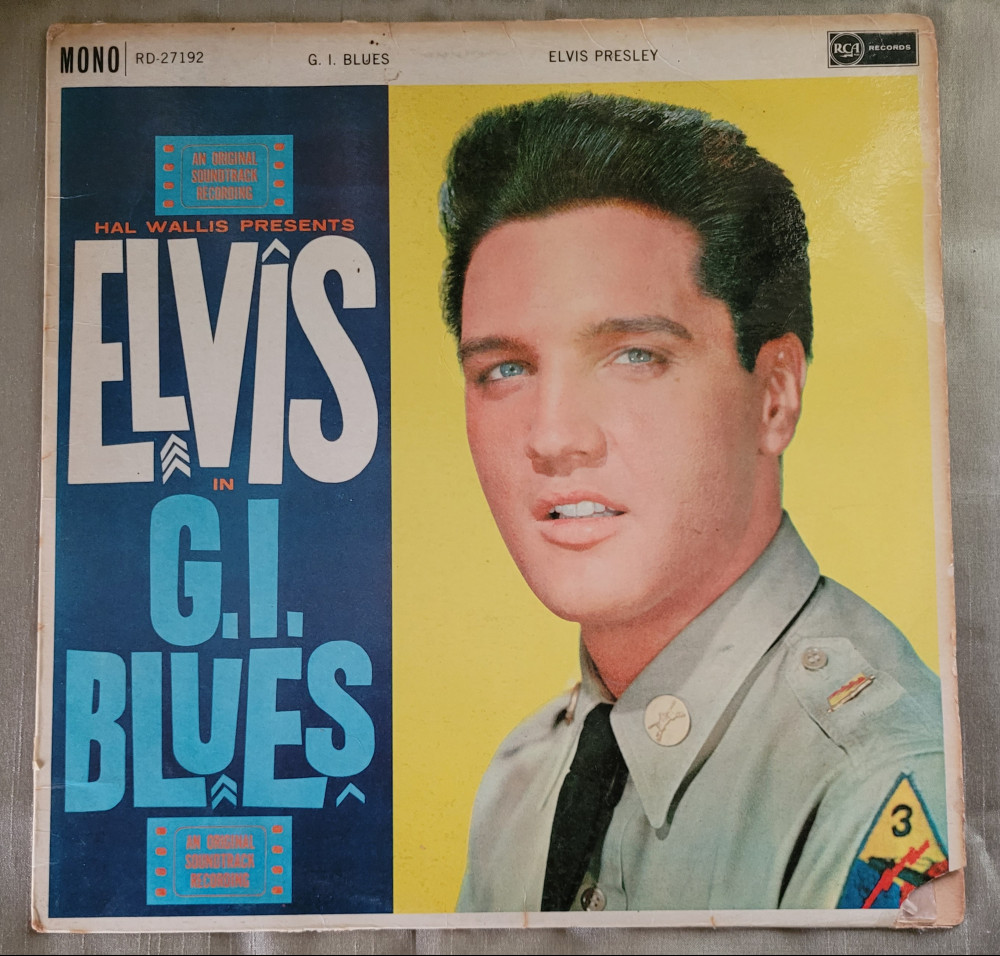
Elvis’s seventh album was his third soundtrack LP, although G.I. Blues was his fourth film. As with Elvis is Back!, it was released in both mono and stereo. It was recorded over a total of three days – 27, 28 May and 6 June 1960 at RCA Victor’s Studio C (L.A.) and Radio Recorders in Hollywood.
G.I. Blues is the first LP since his first not to feature any songs from Leiber and Stoller who had fallen foul of Colonel Tom Parker. Tracks featured include the singles Wooden Heart and G.I. Blues plus a re-recorded version of Blue Suede Shoes.
The album cover pictured is my mother’s copy which she was gifted at Christmas 1960. It is a British imprint, so the reference is a Decca one as Decca (UK) were the UK distributor for RCA Victor.
|
Side 1 |
Side 2 |
|
Tonight Is So Right for Love What’s She Really Like Frankfort Special Wooden Heart G.I.Blues |
Pocketful Of Rainbows Shoppin’ Around Big Boots Didja’ Ever Blue Suede Shoes Doin’ The Best I Can |
His Hand in Mine (November 23, 1960, RCA Victor LPM/LSP-2328)
Elvis’s eighth studio album was recorded at RCA Victor’s Studio B in Nashville, TN. Recording took place over a fourteen-hour period across October 30 and 31, 1960. Two additional tracks, Surrender and Cryin’ in the Chapel were recorded at the same time but held back for later release.
The album is the first of three Gospel albums recorded by Elvis over his career. It showcases his love of church music which was useful in Colonel Tom Parker’s desire to steer Elvis’s career in a more family-friendly direction.
|
Side 1 |
Side 2 |
|
His Hand in Mine I’m Gonna Walk Dem Golden Stairs In My Father’s House (Are Many Mansions) Milky White Way Known Only to Him I Believe in The Man in The Sky |
Joshua Fit the Battle He Knows Just What I Need (Jesus Knows What I Need) Swing Down, Sweet Chariot Mansion Over the Hilltop If We Never Meet Again Working On the Building |
If you have enjoyed this article or have anything you would like to add to the debate, please leave me a comment below.

Hey, great to be back at this awesome site.
Elvis his such a boss Rockstar. Imagine what his life would have been like, being the king of rock and roll when it was at its prime.
The music of that time was just incredible. The skill and talent was beyond anything I have seen ever sense.
And he basically started all that (60’s rock and roll) and was the king of it.
It must have been a wild ride for that guy.
Have a good one.
Hi Jake and thanks for your comment. Elvis was an incredible talent. Unfortunately, he managed to find himself under the sway of the Svengali figure Col Tom Parker.
As his work for a great part of the sixties testifies, money seemed to blunt his senses and as a consequence, his output (mostly film soundtracks) became bland and formulaic
Fortunately, he eventually managed to exert more influence over the material and his 68 Comeback Special reignited his career.
Cheers,
Simon 😉